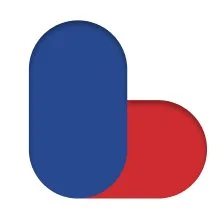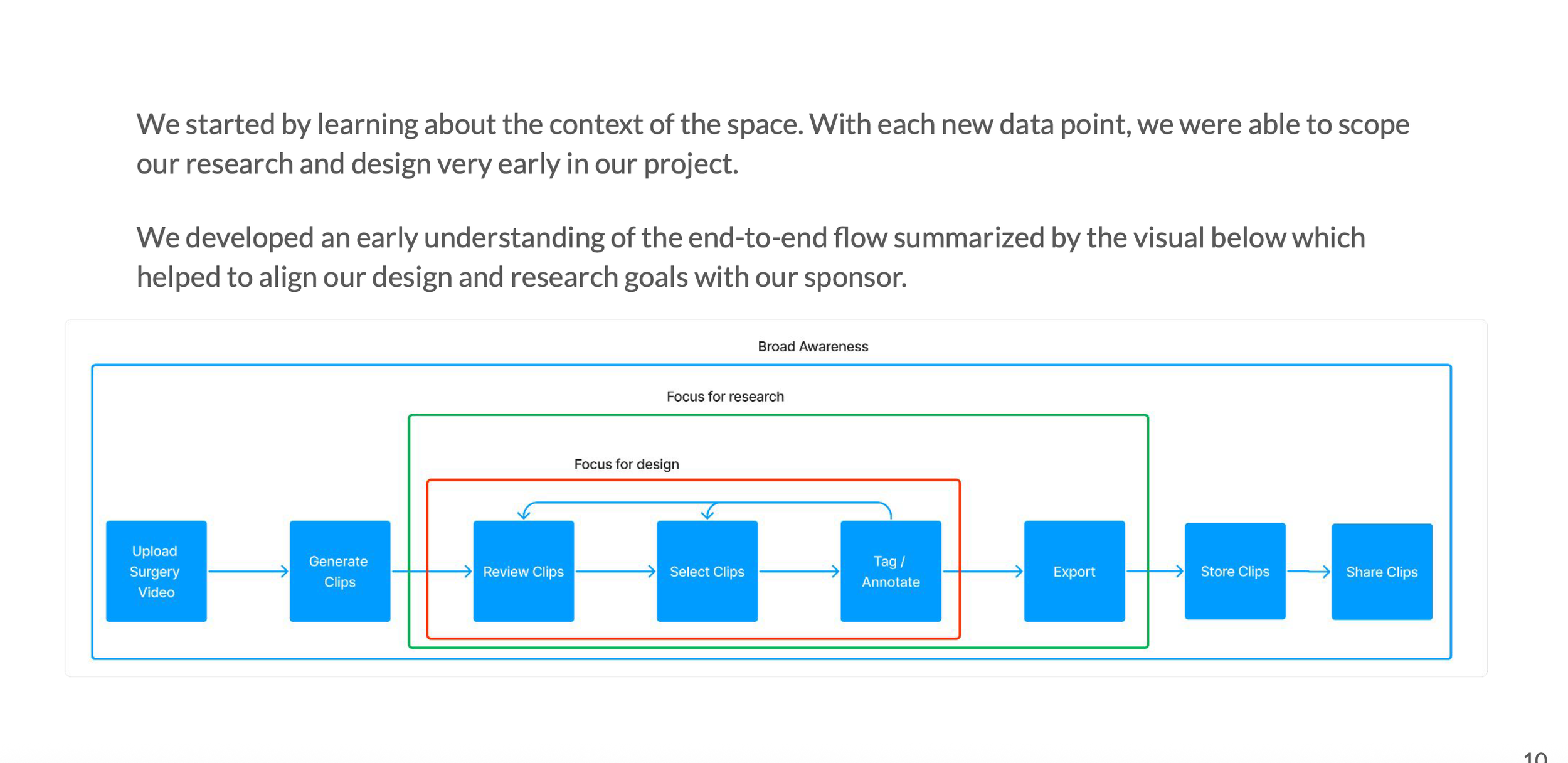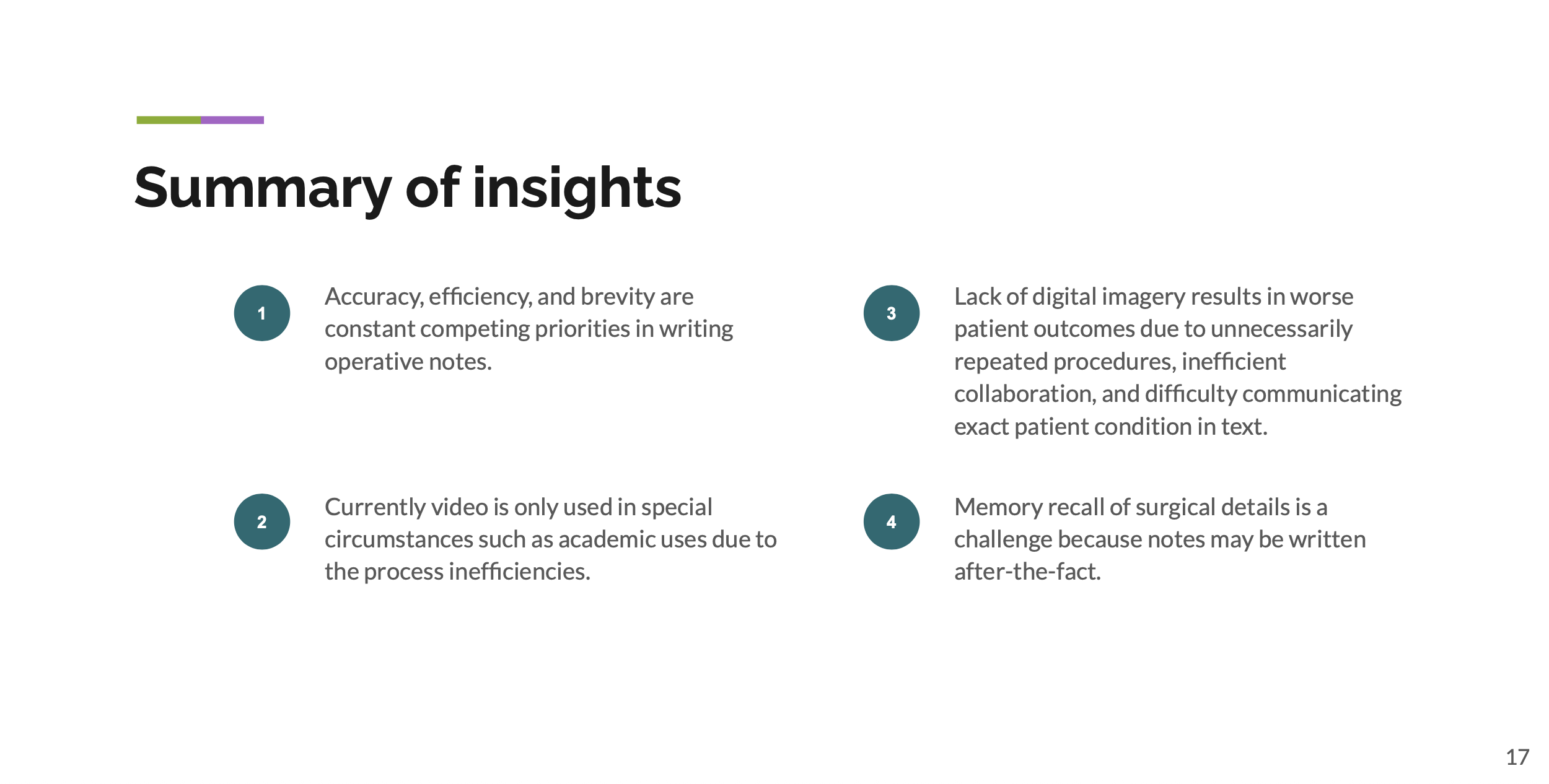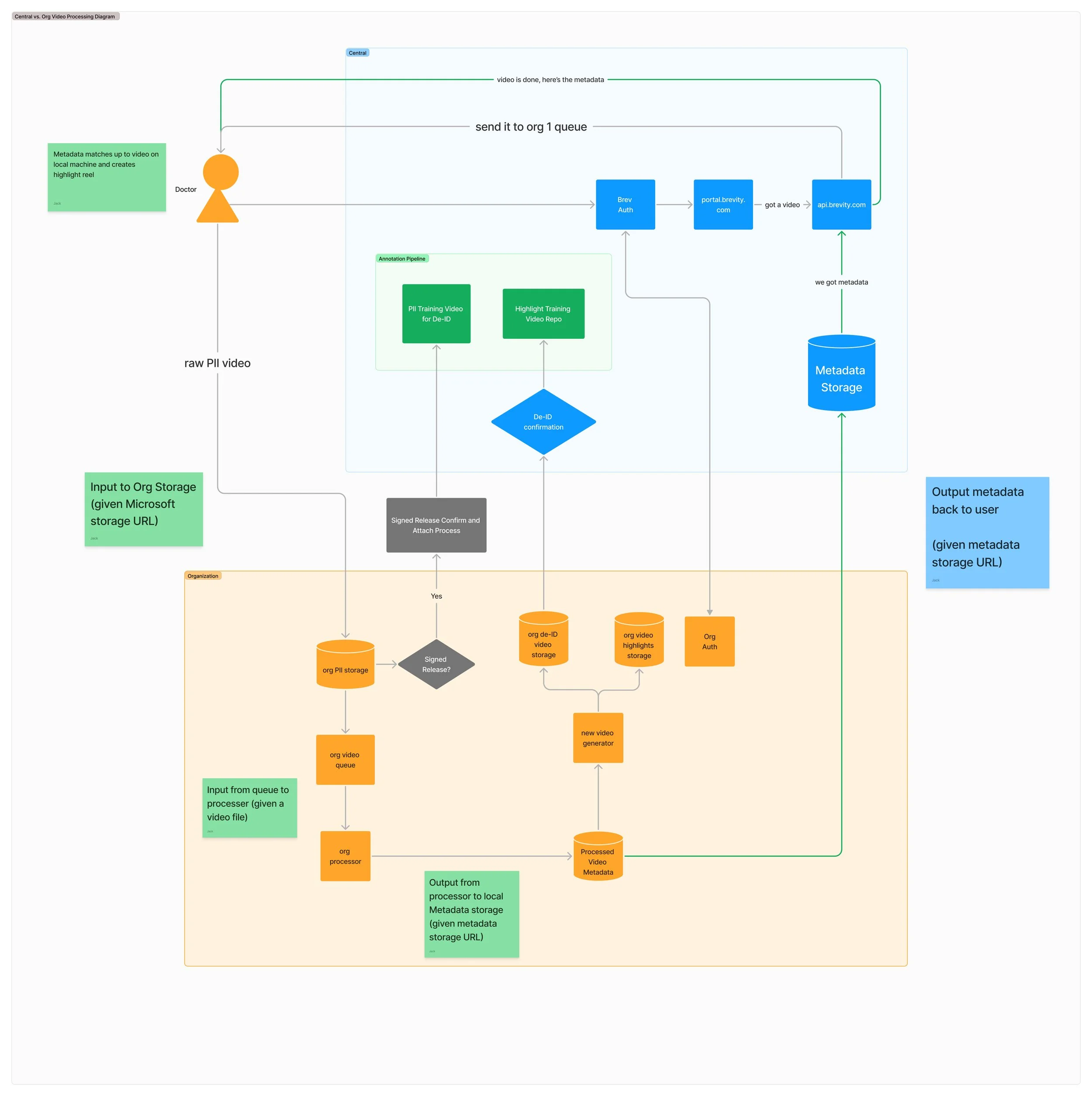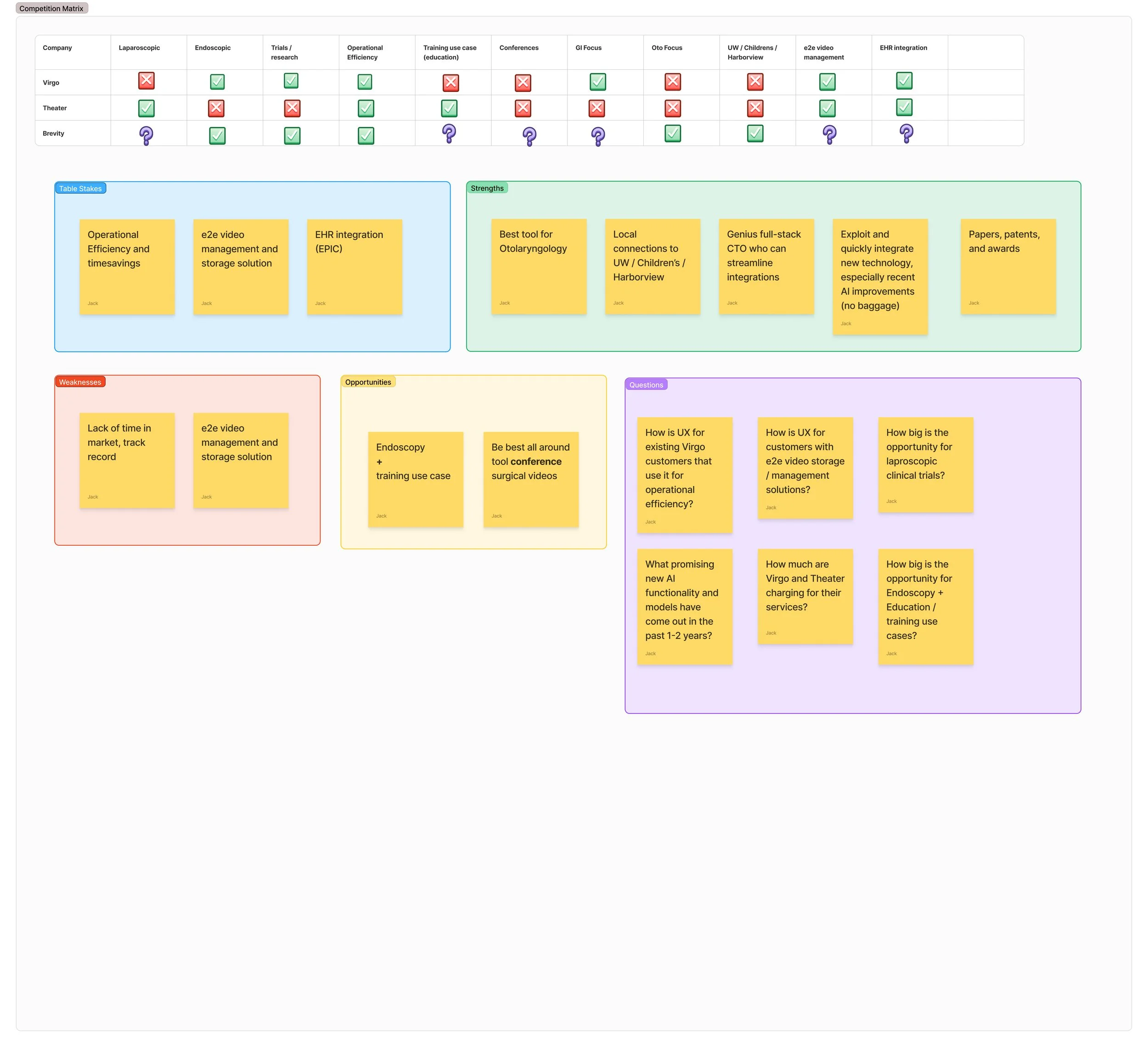Surgical Video Summarization: From Academic Prototype to Startup Implementation
Phase 1: Chronicle, Two Semester Capstone Project
Role: UX Designer (focus on research synthesis, workflow mapping, and interaction design)
Context: HCDE master’s capstone completed across two semesters, one dedicated to research and one to design, in a team of four designers.
Understanding the Current Workflow
In the research semester, I led the mapping of the surgical video lifecycle, documenting both physical and digital touchpoints. This included how videos were captured from the surgical tower, transferred to secure storage, and later accessed for clinical or educational purposes.
Artifact: Workflow diagram
Caption: Early mapping of the surgical video lifecycle, from in-OR capture to secure storage and review.
Research Approach
I co-led secondary research, contextual inquiries, and in-depth interviews with ENT surgeons and residents. These revealed detailed insights into day-to-day workflows, decision points, and friction in reviewing surgical videos.
Artifact: Research methods overview

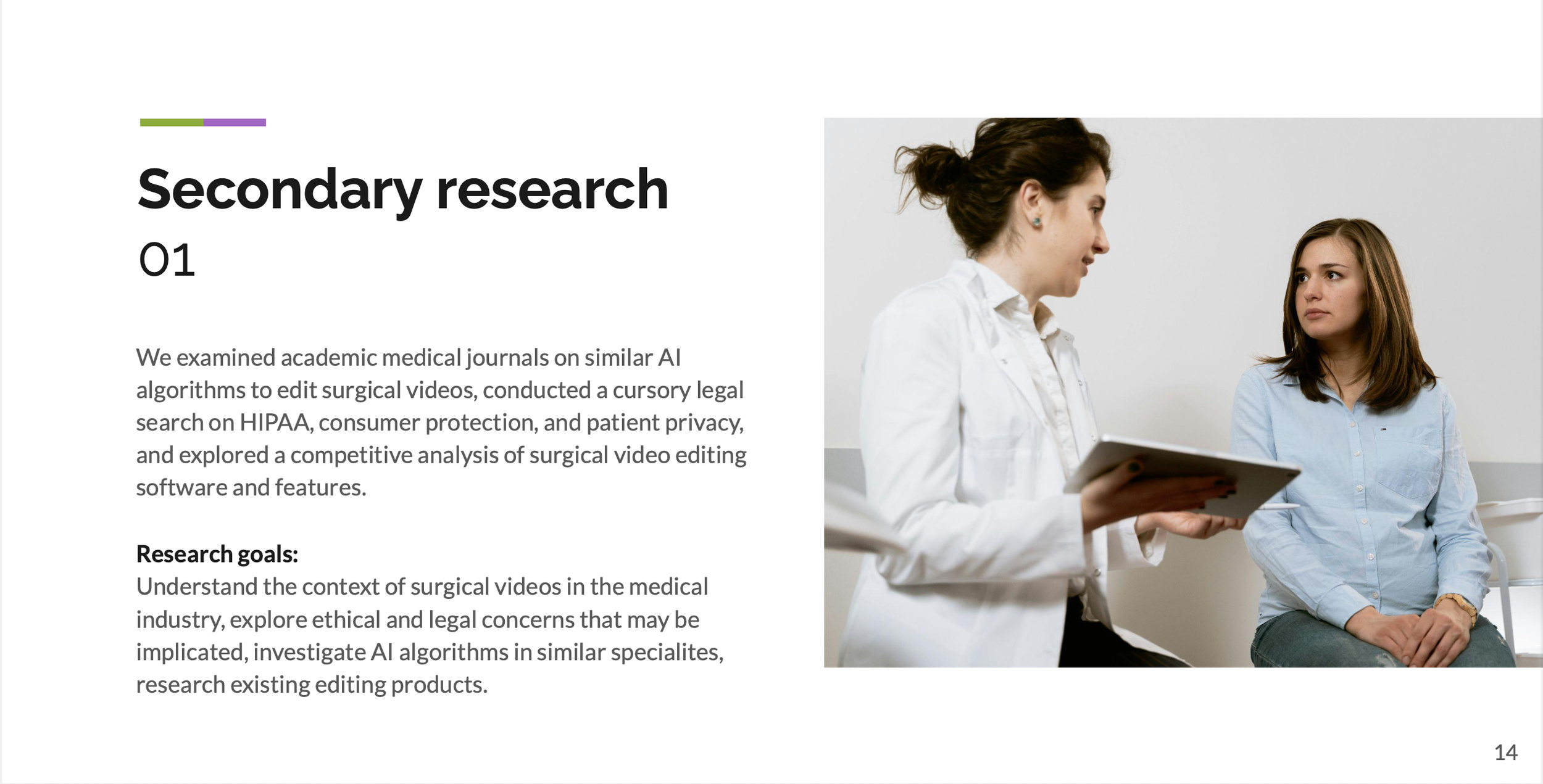
Caption: Multi-method research plan integrating observational studies, interviews, and literature review.
Key Insights
We identified recurring pain points:
Inefficient review processes due to long, non-indexed footage.
Under-usage of stored videos because of retrieval complexity.
Risk of compliance breaches when sharing raw footage.
Artifact: Insights summary table
Caption: Pain points aligned to opportunities for intervention at specific touchpoints.
Mapping the Ecosystem
I translated research findings into a detailed user flow capturing every step from in-OR capture to post-surgery review. Alongside this, I developed early sketches and storyboards to visualize how the service could integrate into real surgical workflows.
Artifact: Sketching and storyboards, user flow




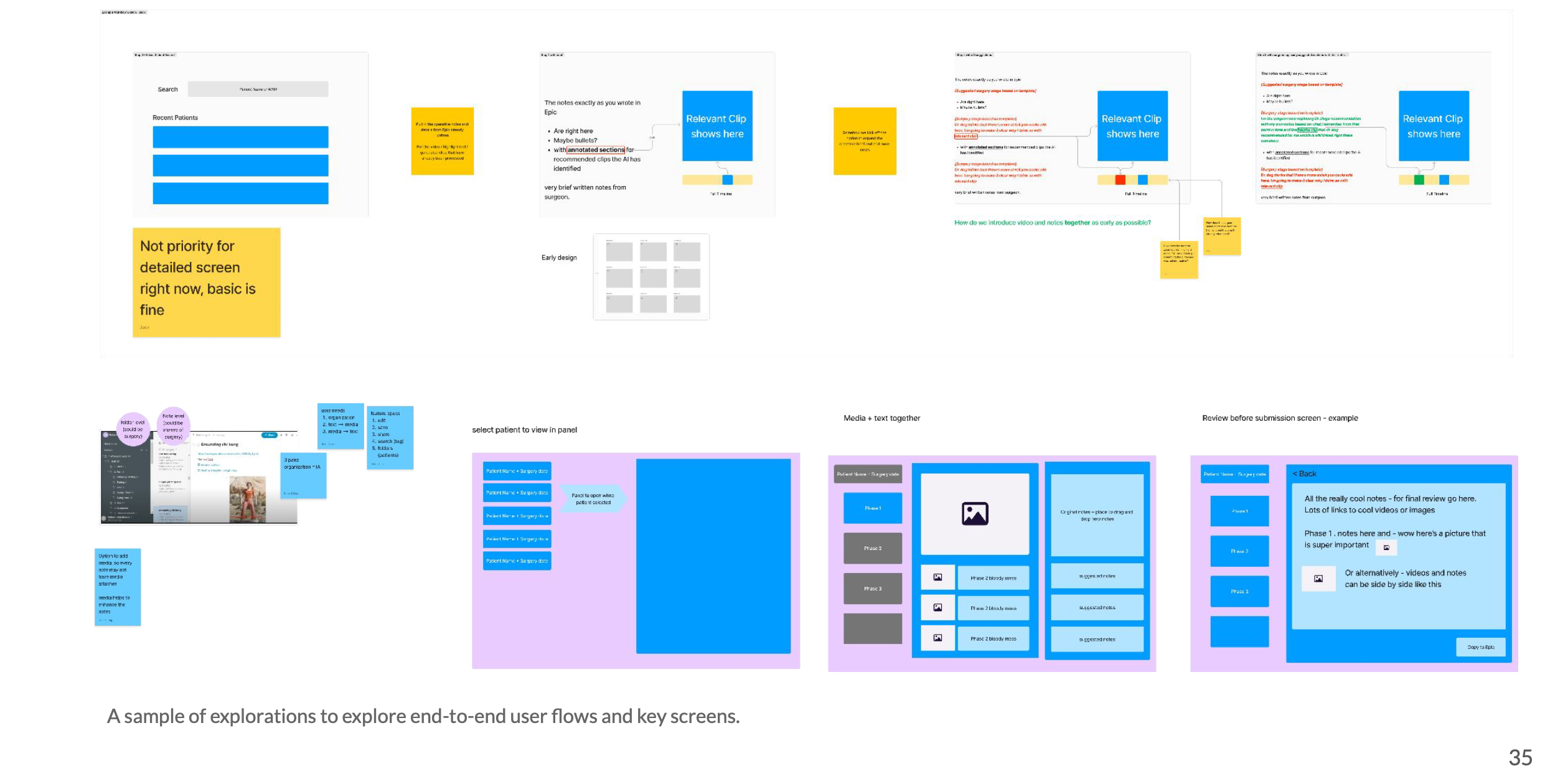
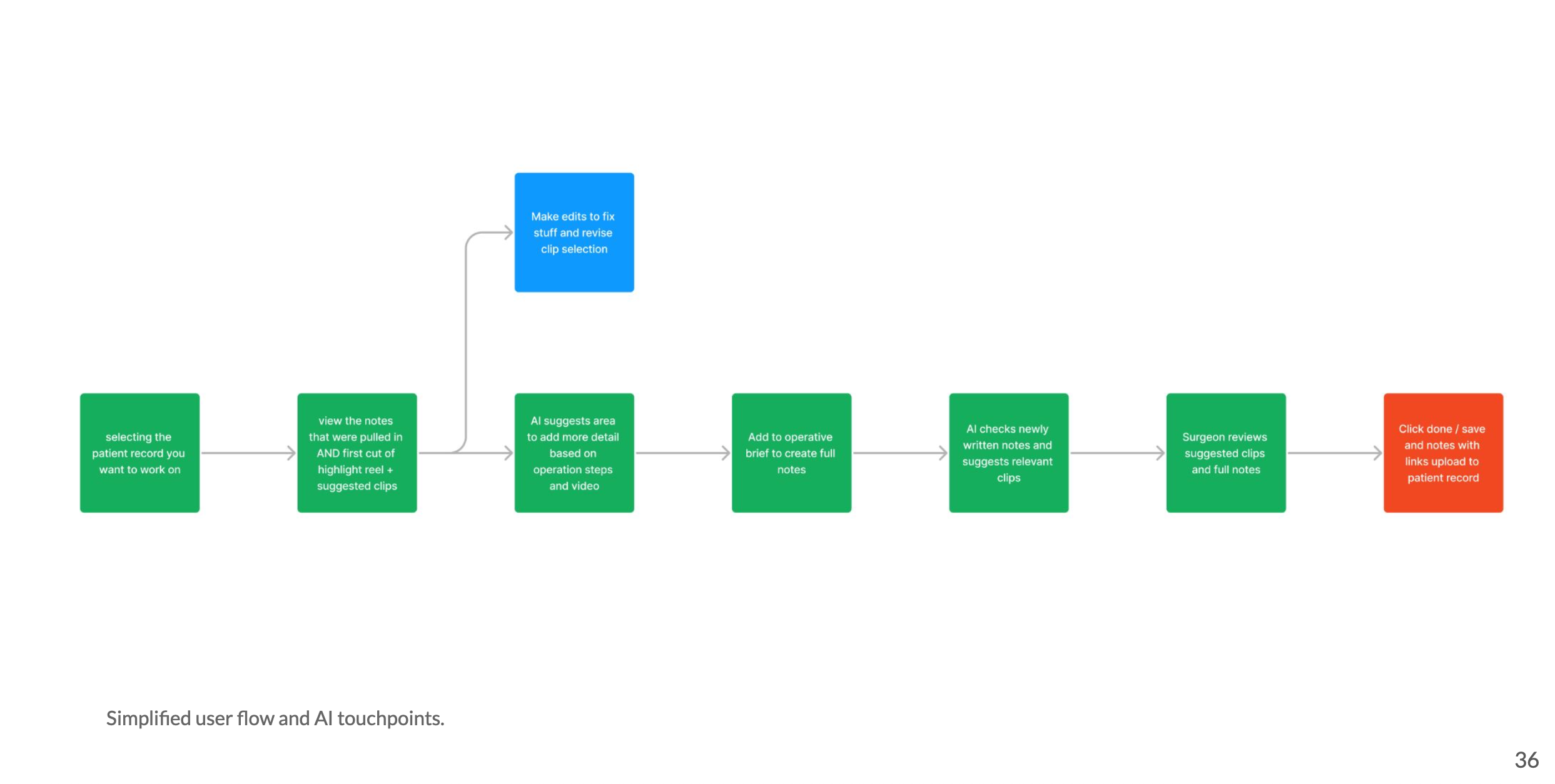


Caption: Visual exploration of interactions and service touchpoints for the surgical video workflow.
Defining the Concept and Final Design
I co-translated research findings into a detailed user flow capturing every step from in-OR capture to post-surgery review. Alongside this, I co-developed early sketches and storyboards to visualize how the service could integrate into real surgical workflows.
Artifact: User interactions list
Caption: Agreed set of 13 priority interactions guiding the design direction.
From there, we developed wireframes to establish the basic structure and layout of each key screen. These appear below and gave us a shared visual language for stakeholder discussions.
Artifact: Wireframes


Caption: Early structural layouts exploring arrangement of navigation, video playback, and annotation features.
We then moved through multiple rounds of design iterations, refining functionality and visual hierarchy. The designs below show this progression, from mid-fidelity layouts to more refined compositions, including feedback incorporated from peers, instructors, and our sponsor.
Artifact: Design iterations




Caption: Progressive refinement of the UI through mid- and high-fidelity prototypes.
To validate these changes, we conducted evaluative testing with both peers and our sponsor. The artifacts below capture this stage, highlighting observations, feedback, and adjustments made to improve usability and alignment with surgeon workflows.
Artifact: Evaluative testing sessions

Caption: Testing with sponsor to refine interaction flow and visual clarity.
Chronicle – Closing and Transition
This process culminated in a set of key screen flows that included the landing page, review bookmarks, search, and publish views, as well as a diagram for visually distinguishing AI-suggested, manually created, and bookmarked clips. Accessibility considerations were integrated before delivery of the final high-fidelity designs.
Artifact: Key screen flows and final high-fidelity designs

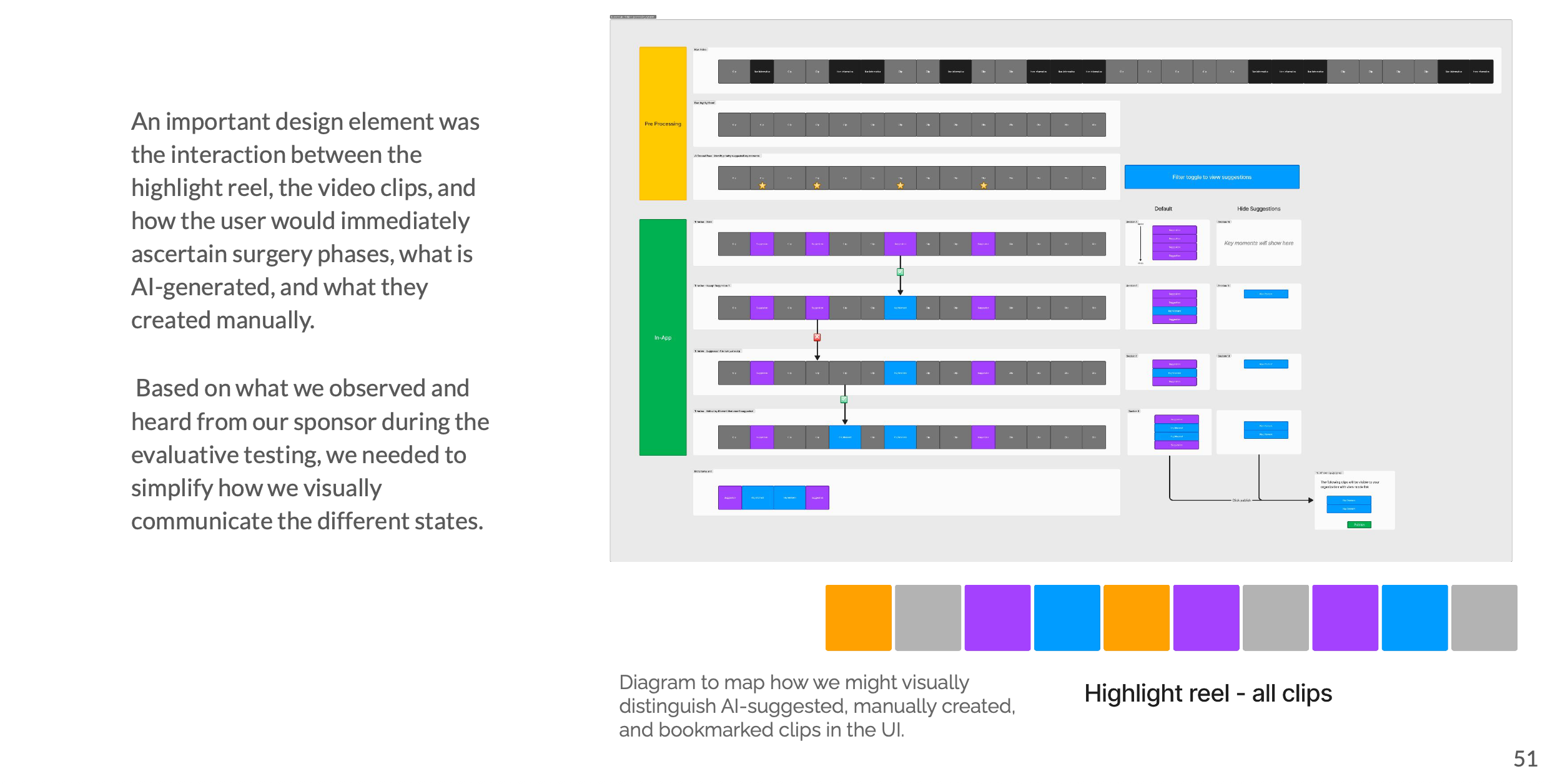

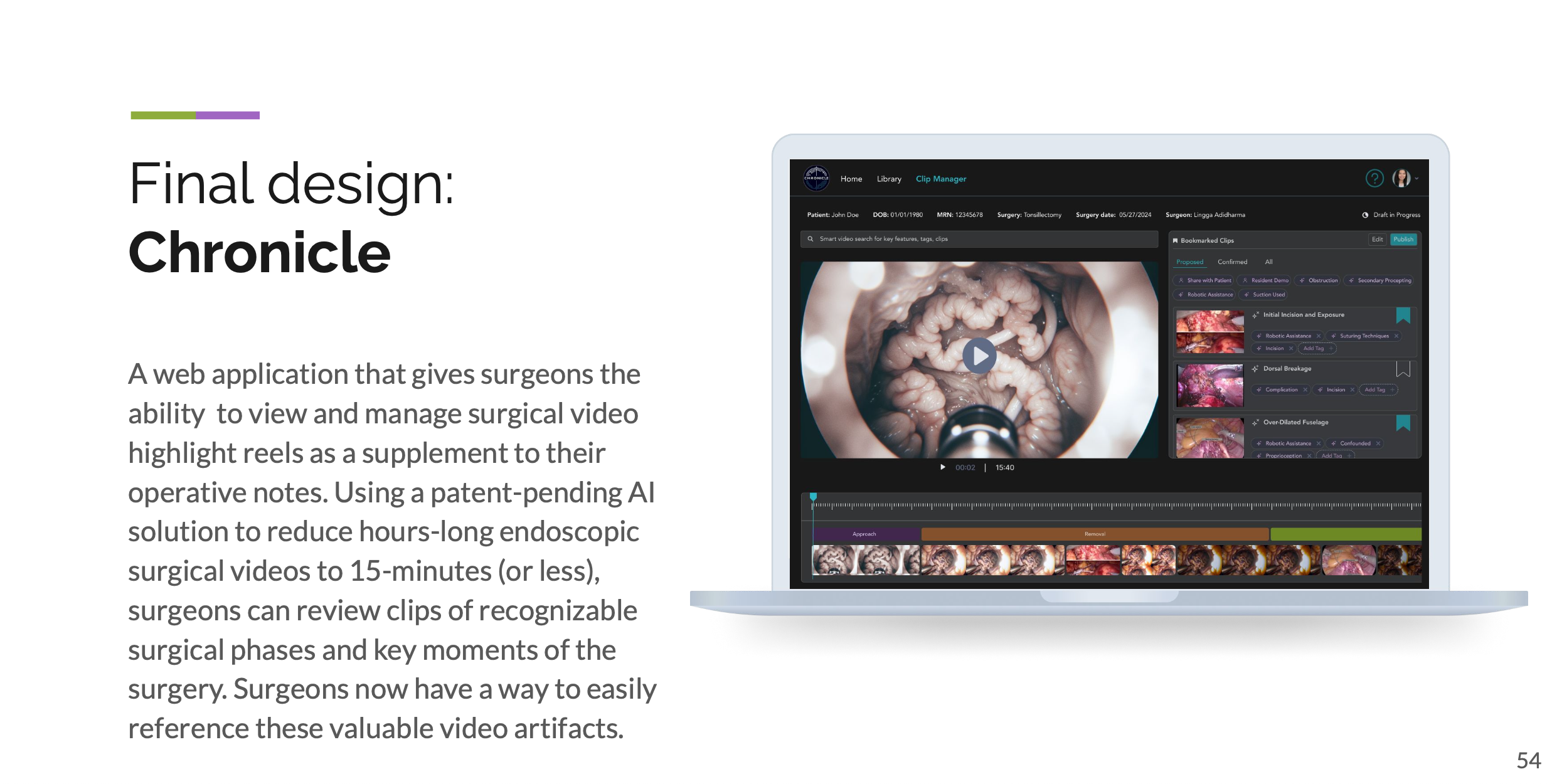




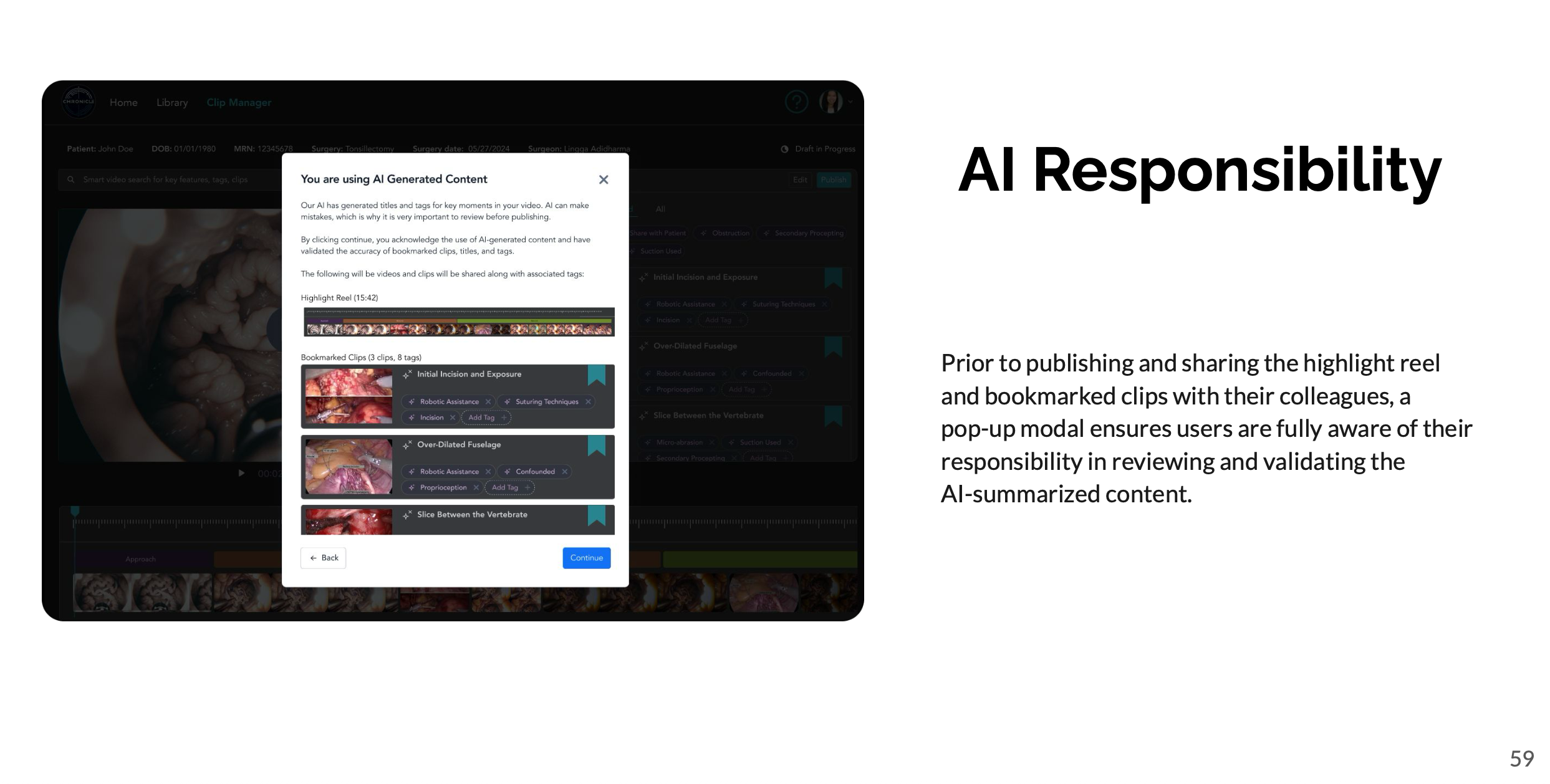
Caption: Final design package showing the product’s core interactions, visual patterns, and accessibility considerations.
With Chronicle, we validated a clear user need and delivered a surgeon-tested concept. Brevity was the next step, expanding research to the broader product ecosystem and exploring multiple models for operational adoption.
Phase 2: Brevity, Startup Continuation
Role: Co-Founder and Chief Product Officer (sole UX lead)
Focus: Translating validated concept into an operational MVP, conducting discovery on new use cases, and adapting workflows for real-world adoption.
From Prototype to Operational MVP
After graduation, I co-founded Brevity AI to bring the Chronicle concept into a HIPAA-compliant, live environment. My focus was on ensuring the MVP delivered the minimum viable interaction flow surgeons needed:
Retrieve surgical video from the OR tower
Upload securely to the web app
Trigger AI summarization
Review and store results
I worked closely with our part-time CTO to design upload and review workflows that embedded compliance requirements without adding friction for surgeons.
Artifact: User flow
Caption: Updated end-to-end flow showing integration of physical OR retrieval with secure digital processing.
Discovery Across Potential Use Cases
We explored three main contexts:
Documentation: Automating operation note drafting
Conferences: Streamlining video prep for presentations
Clinical Trials: Using surgical video for evaluative review and patient recruitment screening
Each context required mapping different users, decision points, and constraints to understand service fit.
Artifacts:
baseline use case
conference workflow ideation
mapping knowns and unknowns for trial workflows
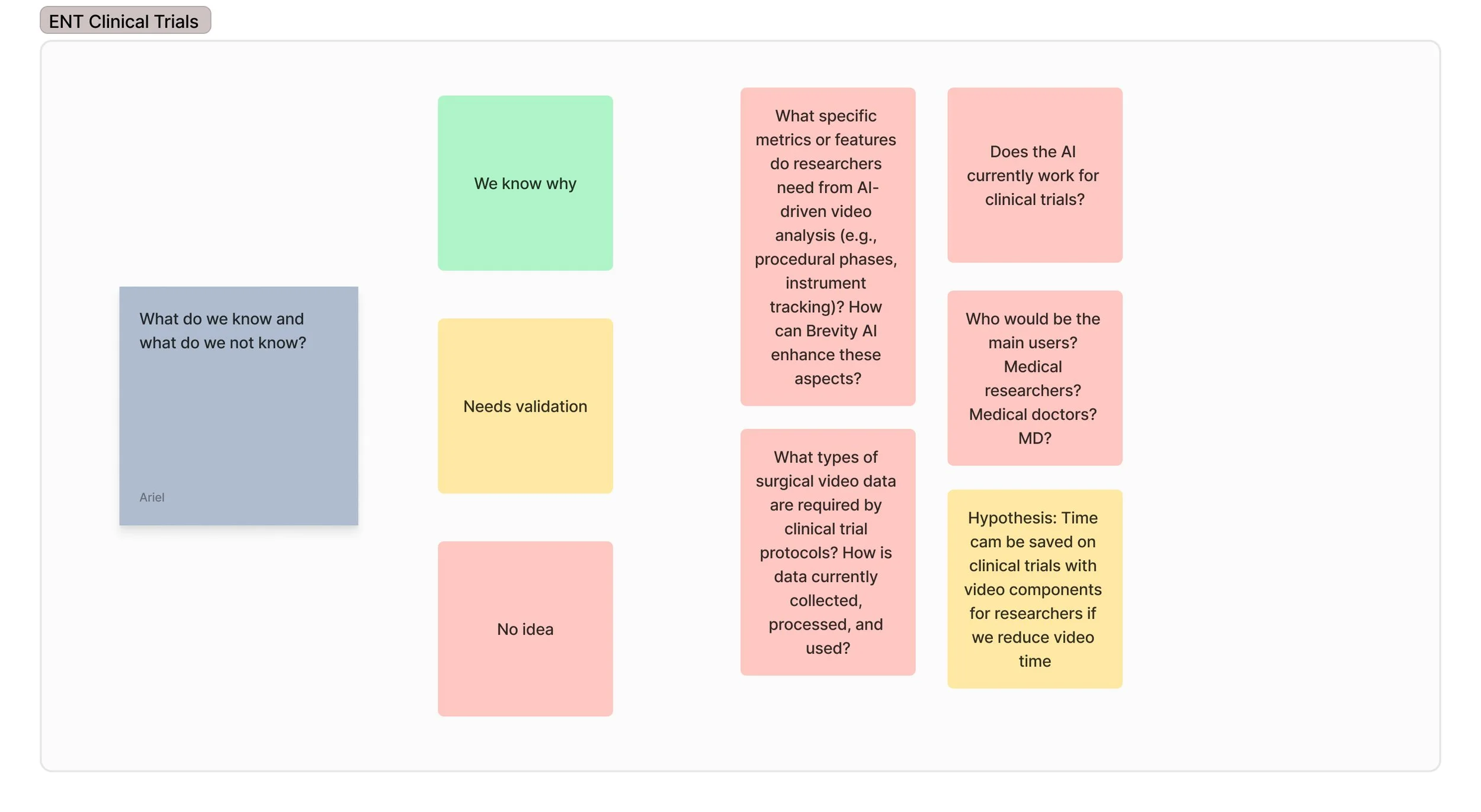
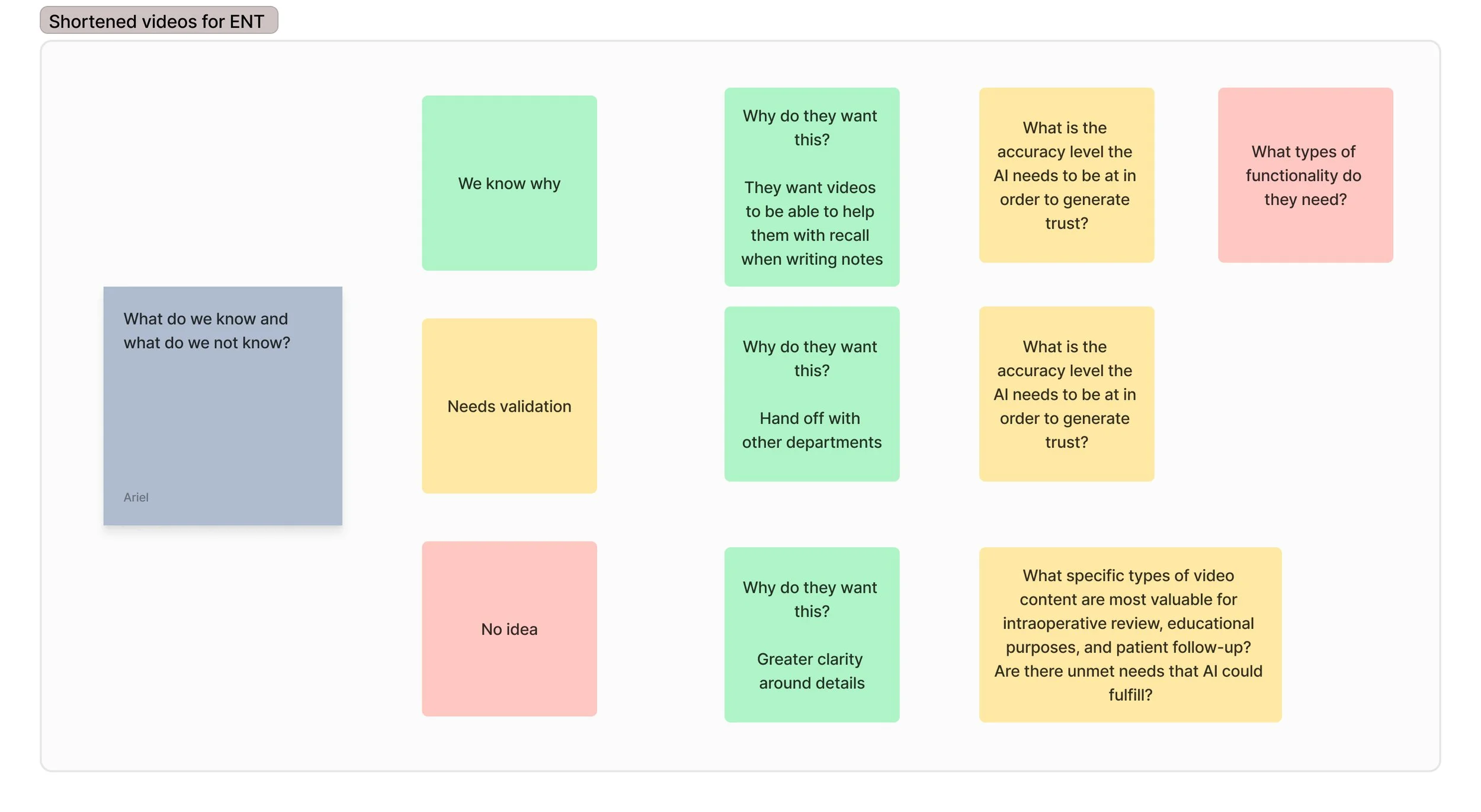
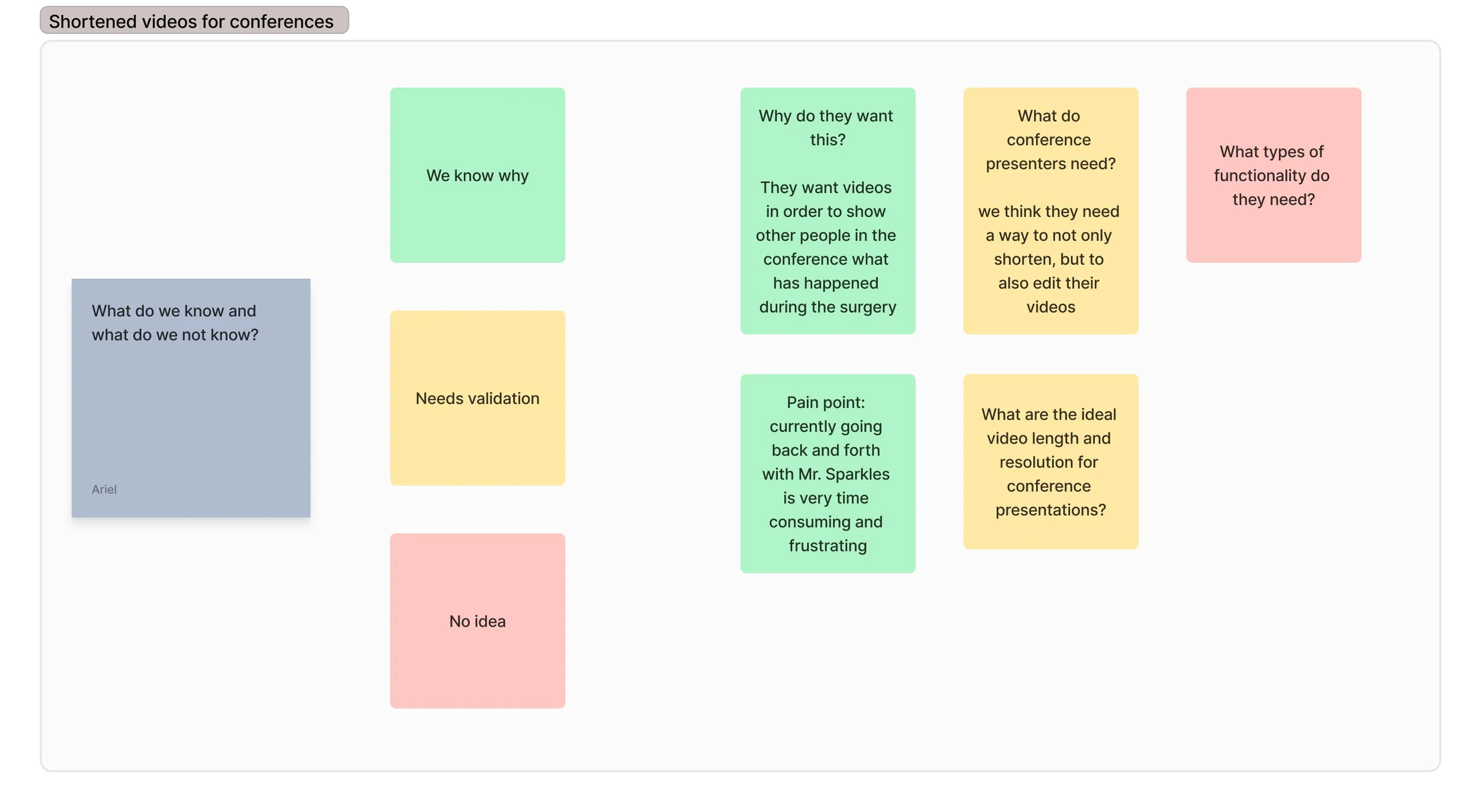
Pivot to Consultation Improvement
By early 2025, we shifted focus to ENT consultation workflows, where the user value and adoption potential were strongest.
Existing State:
Residents wrote consult notes that were often too brief for attendings
Some residents sent encrypted videos informally, which attendings preferred
Designed Workflow:
Resident records consult video
Upload to HIPAA-compliant platform
AI generates summary
Attending reviews before making decisions
Pilot Outcome:
Six consult videos tested against traditional notes
Summarized videos received unanimous 5/5 confidence ratings
Notes scored significantly lower
Additional Contributions
Designed backstage process for storage cost optimization
Conducted competitor landscape scan and feature matrix to position Brevity
Coordinated stakeholder engagement across technical, clinical, legal, and compliance teams
Outcome: Demonstrated strong clinical validation in pilots, but the startup closed in mid-2025 due to funding constraints. The project solidified my expertise in translating research into operational workflows, integrating compliance into interaction design, and leading UX in complex, high-stakes environments.
